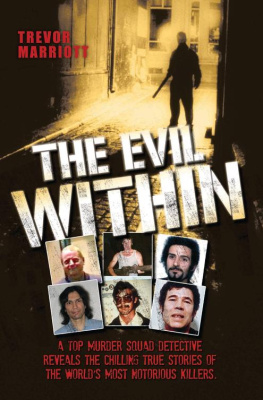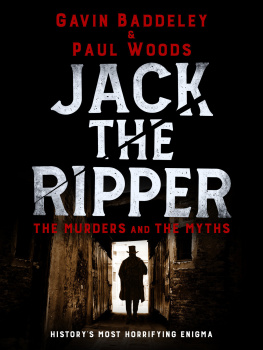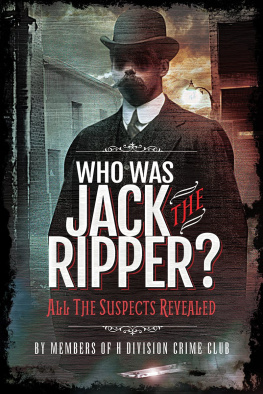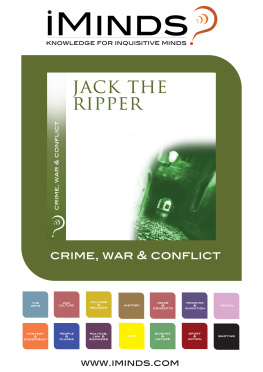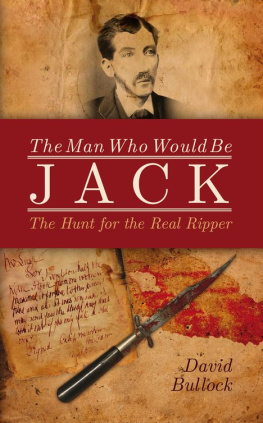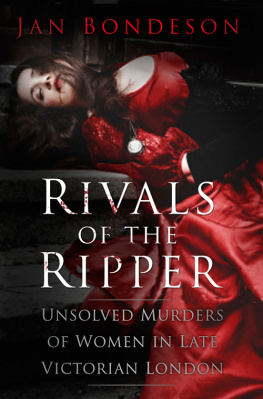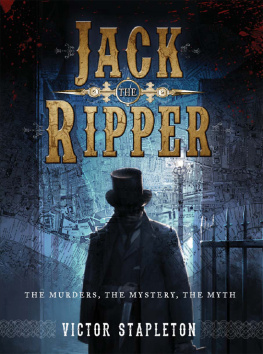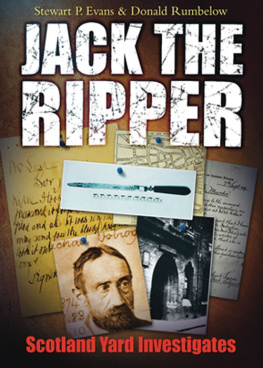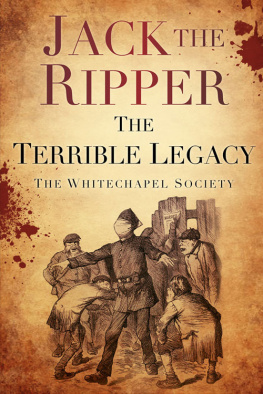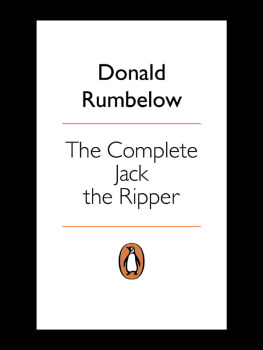Copyright 2013/2018
All rights reserved.
No part of this book may be reproduced in any form or by any electronic or mechanical means including information storage and retrieval systems, without permission in writing from the author. The only exception is by a reviewer, who may quote short excerpts in a review.
ABOUT THE AUTHOR
Trevor Marriott is a retired British police murder squad detective who joined the police service in 1970, and was soon promoted to the Criminal Investigation Department (CID), where he was involved in the investigation of numerous murders, as well as assisting in the investigation of other major crimes throughout his long and distinguished career. He is the author of Jack the Ripper: The Secret Police Files (2013) and The Evil Within -The Worlds Worst Serial Killers (2013) a comprehensive analysis of some the worlds worst serial killers from around the world.
His most recent publications include two Victorian crime mystery novels, the first based on the Whitechapel murders titled Prey Time (2013). The second titled Sherlock Holmes The Final Chapter (2015) in addition he has also published Myths and Mysteries-The Real Truth (2015), and Pirates of the Caribbean-The Real Truth(2017) Full details of all books and purchase options can be found on his website www.trevormarriott.co.uk
To contact the author, to arrange press and media interviews, speaking engagements or any other personal appearances.
Website: www.trevormarriott.co.uk
E Mail:
Copyright Trevor Marriott 2013/2018
The content of this book covers the second and final part of my long and protracted investigation into the Whitechapel murders. For continuity purposes and in order to highlight the results of significant new lines of enquiry it has been necessary to use a significant amount of original material from my previous book Jack the Ripper: The Secret Police Files first published in 2013.
CHAPTER 1
INTRODUCTION
Jack the Ripper: man or myth, fact or fiction? Whoever he was, up until now his identity has remained a mystery. The horrendous murders attributed to the unknown killer spread terror among the residents of Londons East End and his nickname was known and feared the world over.
One hundred and thirty years have passed since the Rippers crimes were committed, yet the search for his identity has been ongoing. In fact the mystery had deepened so much that the truth about the murders has been totally obscured. Innumerable press stories, books, plays, films and even musicals have dramatized and distorted the facts, with the unfortunate result that the public have now accepted the fiction more readily than the facts, and the most worrying fact is that the public firmly believe what they have seen and read as being correct.
To date television documentaries made on the Ripper, total over 40, all being suspect based. There have been in excess of 300 books published on the topic, many by authors all purporting to make a case for their own preferred suspect. Many are nothing more than the author's wild speculative uncorroborated theory, and sadly lacking in hard evidence.
In the UK, the Ripper mystery has become a lucrative cottage industry over the years. But this cottage industry has also spread far and wide, with a plethora of spin off's aptly named Jack the Ripper products freely available on the International market, these include, red tattoo ink, Lavatory Mist Toilet Spray, grape flavored tobacco, vape oil, fat burners, and even a strain of cannabis, and a cannabis pipe also named after Jack the Ripper to go with it. On the International market we must not forget bars, and restaurants that have also benefited from using the name Jack the Ripper, these include a bar in Hamburg Germany, and a restaurant in Singapore also called Jack the Ripper where you can even buy a "Mary Ann" burger.
As a modern day British murder squad detective I had been interested in this case for many years but due to a heavy workload, I never had the time to study it in great detail. However in 2002 with more time at my disposal I decided to reinvestigate the murders. I felt that all the experience, knowledge and insight into the criminal mind I had gained by interviewing and talking to murderers, rapists, and robbers would be invaluable in my attempt to view the murders not only through the eyes of an experienced investigator, but through the eyes of the killer. So I set out to conduct a 21st century cold-case investigation into this fascinating series of 19th century murders.
I looked closely at the murders themselves, the victims, and the suspects at the time, and both the evidence available at that time, and the new evidence, and new suspects that have emerged in the intervening years. I knew I would also need to analyze and assess all the new evidence recently put forward, with a view to either proving or disproving some of the accepted theories about the murders, which have been with us for many years. In doing so I hoped I might find something new that would unlock the mystery and lead me to the identity of Jack the Ripper.
It has been widely accepted that Jack the Ripper killed only five women all of whom have been suggested were prostitutes. This misguided belief appertaining to the number of victims came from a document called The Macnaghten Memorandum penned in 1894 by Sir Melville Macnaghten, who at the time was Assistant Chief Constable at Scotland Yard. At the time of the murders in 1888, Macnaghten had not joined the police service. Up until his return to England in 1887 he had been The Inspector General of the police in Bengal, India. I will discuss Macnaghten and the memorandum in more detail in later chapters
These five victims named by Macnaghten have become known as the canonical five. However, my lengthy and protracted investigation revealed more than five women were in fact murdered in Whitechapel. All of these murders are listed on the front sheet of the official Scotland Yard Whitechapel murders file which is herewith attached. So I have to ask why did Macnaghten choose to mention five and five only, as being the work of Jack the Ripper?

All of the women were killed in similar circumstances, and all the murders occurred in or near Whitechapel, East London, between August 7th 1888 and 13th February 1891, and all were prostitutes. All had their throats cut, and their bodies subjected to mutilations, some more brutal than others, and in the case of three of the victims, it was suggested that the killer also removed vital organs, taking them away with him from the crime scenes.
In addition, I discovered two other similar murders of women, which occurred in central London many years before the Whitechapel murders commenced. Both of these murders bore many comparable similarities to the later murders.
Further investigative work would cast a major doubt surrounding the removal of the organs from the victims at the crime scenes. I would later discover the existence of missing police files, which had never before been made public, which contained the names of new Ripper suspects never before previously discussed. I would also discover new photographic evidence, which could perhaps connect at least one of the Whitechapel murder suspects to a series of similar murders, which took place in New York and Germany, following the cessation of the Whitechapel murders. It soon became apparent that the mystery was not a singular one but involved intrigue and false trails, with a number of mysteries unfolding within the mystery.
CHAPTER 2
WHITECHAPEL 1888
All the murders were committed in squalid poor areas or the East End of London, and all the victims have been categorized as prostitutes. If they were of that class why did the Ripper choose them as his victims? This is one of the questions which will never now be fully answered. Few of them were pretty, or young. Indeed, with one exception, all the women lured by the killer to their deaths were approaching or past middle age. I can only assume that by comparing modern day serial killers and their victims, the Whitechapel victims were selected because they were easy, and vulnerable targets, alone, and out on the dark and dimly lit, deserted streets in the late hours.
Next page


